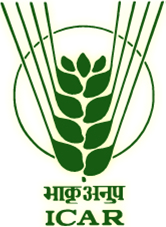Advisory for the Month of August 2025
A. For Transplanting Kharif Onion Seedlings
If kharif transplanting has not been done yet, it may be done now as per the practices given below.
- Field should be ploughed and disked properly to eliminate debris and soil clods.
- Apply FYM 15 t/ha or poultry manure 7.5 t/ha or vermicompost 7.5 t/ha at the time of last ploughing and level the field properly prior to bed preparation.
- Adopt broad bed furrows (BBF) of 15 cm height and 120 cm top width with 45 cm furrow. This helps drain excess water and reduces anthracnose disease.
- BBF method is suitable for drip and sprinkler irrigation.
- For drip irrigation, use two drip laterals (16 mm) per BBF at 60 cm with 30–50 cm emitter spacing and 4 L/hr discharge.
- For sprinklers, use 20 mm laterals at 6 m spacing with 135 L/hr discharge.
- Apply 75:40:40 kg N:P2O5:K2O per hectare. Add sulphur based on soil test: 30 kg/ha (>25 kg soil S) or 45 kg/ha (<25 kg soil S).
- For drip: 25 kg N at transplanting, rest in six equal splits up to 60 days via drip. Apply P, K, and S as basal dose.
- Apply 5 kg/ha each of Azospirillum and phosphate-solubilizing bacteria with inorganic fertilizers.
- Apply oxyfluorfen 23.5% EC (1.5–2.0 ml/L) or pendimethalin 30% EC (3.5–4 ml/L) before or at transplanting.
- Use 35–40 day old seedlings, spacing 15×10 cm (row × plant).
- Select healthy seedlings. Avoid over- and under-aged ones. Trim top third before transplanting.
- Dip roots in 0.1% carbendazim before transplanting to prevent fungal disease.
- Give irrigation at transplanting and 3 days later for establishment.
B. For Standing Kharif Onion Crop
- Drain excess water promptly during continuous rainfall to avoid anthracnose.
- Apply first top dressing of 25 kg/ha nitrogen at 30 days after transplanting.
- If leaves yellow due to nitrogen leaching, apply foliar spray of urea @ 10 g/L.
- On continuous rain (3 days), humidity >85%, or cloudy days, spray benomyl @ 0.2% to prevent anthracnose.
- Follow up after 15 days with methomyl (0.8 g/L) + mancozeb (2.5 g/L) to manage foliar disease and thrips.
C. For Raising Late Kharif Onion Nursery
Consider the following while preparing late kharif nursery:
- 0.05 ha nursery and 5–7 kg seeds for 1 ha transplanting.
- Deep plough to expose insect pupae and weed seeds.
- Clear all debris and stones before bed preparation.
- Apply 0.5 tons of well-decomposed FYM in 0.05 ha.
- Prepare raised beds of 10–15 cm height and 1 m width.
- Apply pre-emergence herbicide pendimethalin @ 0.2%.
- Treat seeds with carbendazim @ 1–2 g/kg before sowing.
- Apply Trichoderma viride @ 1250 g/ha to control damping off.
- Apply 4:1:1 kg NPK per 500 m² before sowing.
- Sow seeds 50–75 mm apart; cover with FYM/compost and irrigate lightly.
- Hand weed at 20 days after sowing.
- Apply 2 kg N per 500 m² after weeding.
- Drench with metalaxyl @ 0.2% at 10–15 days post-sowing. For foliar diseases, spray mancozeb/tricyclozole/hexaconazole @ 0.1%.
- On high thrips infestation, use foliar spray of fipronil/profenophos @ 1 ml/L.
D. For Stored Rabi Onion and Garlic Bulbs
- Monitor bulbs for sprouting/rotting; remove affected ones immediately. Ensure proper ventilation.
- Spread onion bulbs in heaps up to 4–5 feet high only.
- Store garlic bulbs with leaves by hanging or in tapering circular heaps in ventilated structures.
Note: Profenophos, fipronil, and methomyl are recommended only when thrips damage is visible. Metalaxyl, benomyl, mancozeb, hexaconazole, and tricyclozole are to be used only when disease incidence is observed.





